Dolphins
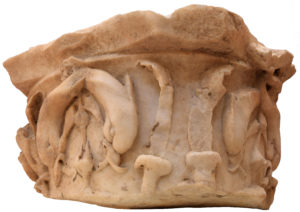
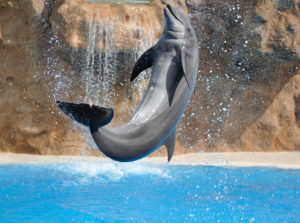
Dolphins: what joy and sense of freedom they communicate to us!
Now that the confinement continues, thanks to the low anthropogenic impact, the sightings of dolphins in the harbour of Cagliari and in the Venice lagoon’s cleaner waters, have amazed us and induced us to think.
So, does the dolphin live by playing or does it play by living?
The ancients loved this animal, one that inspires great sympathy. They represented it in many forms of art as a positive symbol. Dolphins almost seem to smile with their muzzle.
Ancient sources tell us about him: Aristotle, Helianus, Solinus and Pliny the Elder.
The Minoan and Greek Archaic culture represented it in art and elaborated mythological tales that connected it to the figures of Poseidon and to the dualism of Apollo / Dionysus. Myths often deal with dolphins rescuing shipwrecked people, who were plunged into this condition due to pirate thefts or stormy seas. There are many anecdotes handed down by the ancients about the friendship between men and dolphins: in Greek tradition, it is often associated with Aphrodite, given the origin of the Goddess of Love who was born from the foam of the sea.
Christian iconography, for example in the catacombs, reinterpreted the symbol of the dolphin to represent the soul of man who reaches the port of salvation through the tormenting waters of existence, and also to depict Christ.
In the photo by Giuseppe Bruni, sculpted dolphins decorate a Roman capital in marble from the 2nd A.D., preserved at the Museum of Archaeology of the University of Pavia.
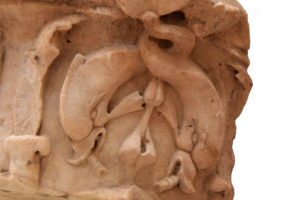
Other photos:
Fresco with dolphins, Knossos Palace, Queen’s Megaron, north wall, Crete:
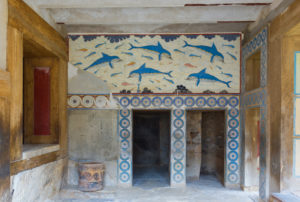
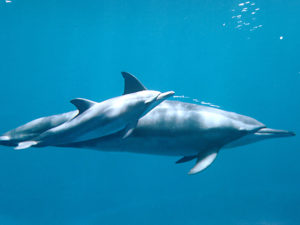
Eros rides a dolphin, floor mosaic, Baths of Neptune, Ostia Antica Archaeological Park:
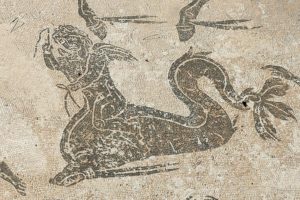
Catacombs of San Lorenzo, inscription with dolphins, Rome:

